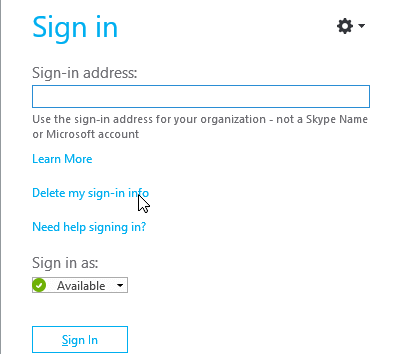
Go to “C:\Users\user\AppData\ Roaming \Microsoft\Crypto\RSA.


I actually just did all 3 steps at once versus doing each one at a time and it worked great for me.Īs part of clearing Lync’s (or Skype’s) cache, we also need to delete the RSA (encryption key). Open the registry editor (Start + R -> type regedit -> Enter), go to “HKEY_CURRENT_USER\Software\Microsoft\office\15.0\Lync (or Skype)” and delete the specific user’s expandable sip profile folder (the one that contains the user’s email address to sign in to Lync (or Skype)):.Go to “C:\Users\Username\Appdata\Local\Microsoft\Office\15.0\Lync (or Skype)\ Tracing\” and Delete All files.Go to “C:\Users\Username\Appdata\Local\Microsoft\Office\15.0\Lync (or Skype)\” and delete the specific user’s sip (Session Initiation Protocol) folder.Then – type in the login details and password again and try to log in. Open Lync/Skype login window, and click on “delete my sign-in info”. If one doesn’t work for you – keep going and try the next one. Uninstalling and reinstalling Office 365 software is not going to help you. If the problem continues, please contact your support team”. “Cant sign in to Lync – There was a problem acquiring a personal certificate required to sign in. When done, try signing in to Skype for Business and check to see whether or not the problem has been resolved.Lync/Skype Error message when signing in: Type the following into both the Internal server name box and the External server name box:.



 0 kommentar(er)
0 kommentar(er)
